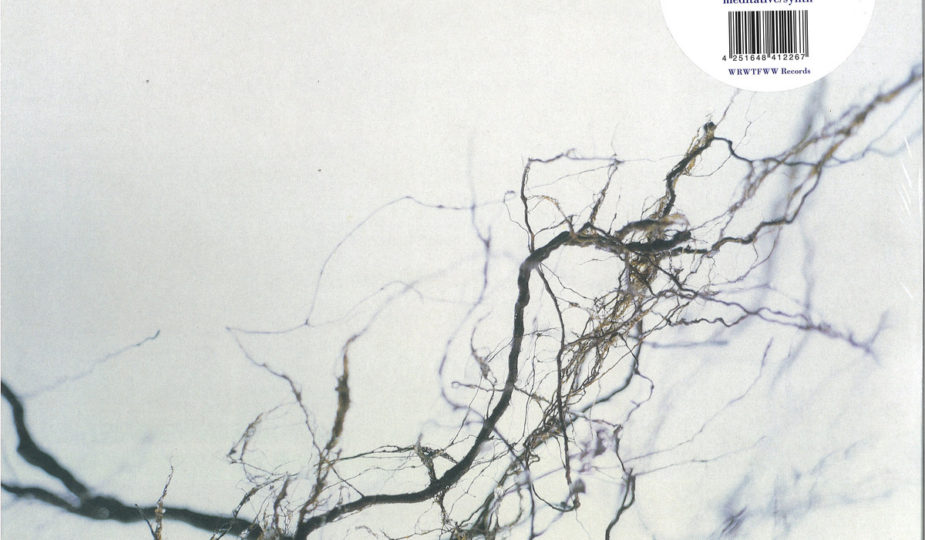
Yutaka Hirose – NOVA +4 (1986)
I have always rejected the general notion that music was merely a listening experience or throwaway entertainment. Even at its most superficial, music feeds the intellect and the soul, for the better or worse. It informs us of the world we live in, and makes us part of the community we mentally and physically inhabit.
Music, or more broadly sound, is a fixture within environments that change. That is to say, not even silence is silent. This is the idea that sound is music, and it’s constantly surrounding us and changing. When I was a small boy laying in bed, I often listened to the distant whistle of a passing train that consistently was heard at midnight. It was a distant cry from a world I didn’t know, a whistle mixed with the buzz of the environment around me: the old furnace clicking on and off, the quiet conversation of my parents’ television in the living room. All of this was the music of my late nights. I heard each creak of that old house. It wasn’t disturbing or unsettling, these noises were in fact soothing and I could feel my eyes closing with each click of the furnace turning on and off. My only thought was that far-off train with its mysterious cargo.
Many musicians have explored the concept of furniture music or musique d’ameublement: sound as an accountable fixture of the environment. Brian Eno played an important role in bringing ambient sounds to a larger audience, yet very few artists have captured that sound as successfully as Yutaka Hirose’s recordings NOVA+4, a commissioned environmental soundtrack that would be part of Misawa Home’s Corporation Soundscape series. NOVA +4 is music composed to accompany the Misawa Corporation’s introduction of prefabricated homes for public viewing in 1986. The recordings created a general sense of a natural environment into the modern aesthetic that Misawa had built into their housing project. In other words, a sense of the natural in the highly structured building environment. Corporate commissioned or not- as years have passed by, this environmental soundtrack became known as Yutaka Hirose’s masterpiece and one of the most important pieces of ambient composition we have.
Hirose describes the NOVA +4 project as “a soundscape that uses natural sound” with a focus on the serenity and lushness of water. Mixing samples of “natural sounds” which he recorded that fit the tone of his own ideas about music and composition. Unlike most composers, Hirose does not utilize melody or chords in his music. He simply set aside those features entirely while blending nature’s own music with the synthetic sounds of his Fairlight CMI, Prophet-5, Yamaha DX7, and other electronic and acoustic instruments. These sounds combined into a fluid, organic music that it is like listening to morning dew settle on the leaf of a tree just outside your window. There is an unusual beauty to the sounds on NOVA +4, a scenic fullness to the most minimal of noises that places these recordings outside the scope of anything we would call ambient or electronic or evening musical. Listening to these recordings have more in common with the study of a morning summer rain. Each droplet is life affirming and gives growth and awakening to the life touch by its presence.
Hirose insists he was inspired by abstract sound and forward movement of artists like Throbbing Gristle, Faust, Can, and mainly Karlheinz Stockhausen. Which gives you some idea of the unique sound to discover and journey through this amazing album. German composer Karlheinz Stockhausen is in fact the composer Hirose looked toward for inspiration and influence. Stockhausen’s intellectualism and philosophy on music can be heard throughout Hirose’s NOVA recordings, the respect is right there in the sound and technique. Stockhausen is often considered as one of the most controversial and important composers of the 21st Century. Educated at the Hochschule für Musik in Cologne, Stockhausen was a member of the Darmstadt School of composers. A term coined by composer Luigi Nono in 1958, the Darmstadt School was influential from the 1950s through the early 1960s. Known for their use of Serialism in composition (using a series of pitches, timbres, and rhythms to create music) and post-tonal thinking (music written outside of the orthodox tonal system), the Darmstadt composers were often ridiculed by the music school establishment. Many schools actually forbid the use of both theories in composition, calling them overly modern. Some went so far to describe the Darmstadt composers as a “sect” or subversives and used the term only as pejorative.
The groundbreaking compositional influence of Karlheinz Stockhausen can be heard throughout the intelligent beauty of the NOVA +4 recording. His work in electronic music and the aleatory techniques of controlled “compositional chance” helped open and balance Hirose compositions. According to Stockhausen, “a (musical) process is said to be aleatory if its course is determined in general but depends on chance in the detail”. For Stockhausen (and Hirose) there is no separating that balance from the creation of music. With his NOVA +4 project, Hirose is looking to the future of music as he both challenges us and satisfies us intellectually and creatively. “ I am not consciously producing music as such, but creating a sculpture of time made with sound within the meaning of the general music production, which to me is universal”.
by Shawn Ciavattone

You always have such interesting recommendations 👌
Shawn,
Another priceless discovery, you have a special talent for describing music, you know how to distinguish between different sounds and you always give different information about each artist. It definitely reminds me a lot of Brian Eno’s “Thursday Afternoon” (I listened to the whole album and loved it).
Let’s see how this one grows on me.
Thank you!
Thank you so much, Octavio. The Thursday afternoon comparison is a good one. I feel like both of these records are pursuing the same goal, but with slightly different techniques. For the longest time the only place to here NOVA was online. So it’s great to see this piece of music getting an official release. So much passes for “ambient” music unfortunately. Mostly just pretenders and posers. The difficult part is weeding through the mediocre and safe for the truly radical voices. It’s also the fun part.
Shawn,
Your descriptions (“serenity and lushness of water”, “drop of morning dew on a leaf”, “morning rain”) perfectly fits these contemplative and reflective sound sculptures from Yutaka Hirose, music that subtly immerses the listener into an environment. I also appreciate your autobiographical memories about the sounds of the distant train and the worlds those sounds conjured and your detailed discussion of the abstract and ambient in 20th century music.
Thank you Mark. I had read about these recordings before I actually listen to them and had anticipated the sound since I wouldn’t allow myself to sample them online. Most ambient music is pretty useless and banal. But Hirose brings these compositions to life.
I understand all influences but Throbbing Gristle?
I found that interest I think the influence is more philosophical. The rejection of the standard western melody. Embracing the atonality.
Thank you for your help with this. I caught a short segment of this record and was fascinated by the sound and the space between the sound. Only Brian Eno’s Thursday Afternoon captures the same space. Say we have said, Ambient music can be great. But it should do more than simply pretty background music. It should affect the environment.
So soothing and beautiful!
A beautiful and intriguing recording. Seems to change each time you listen to it.